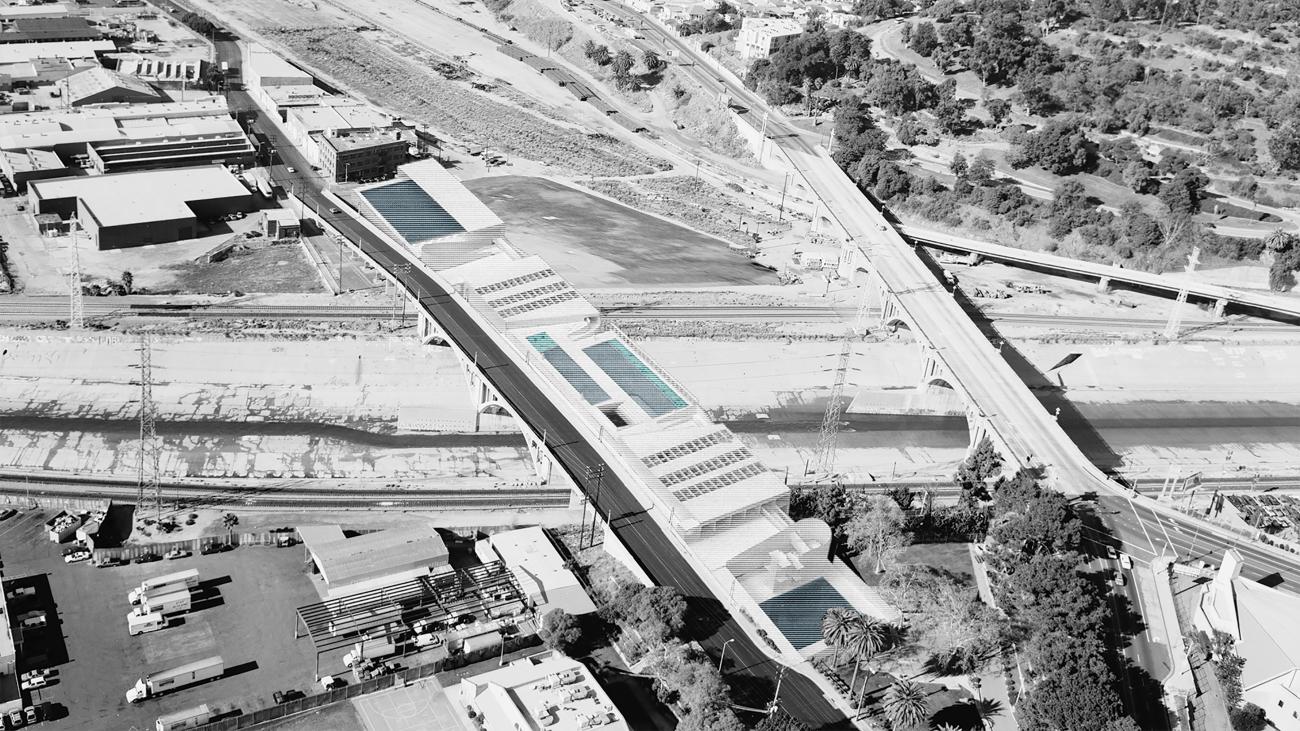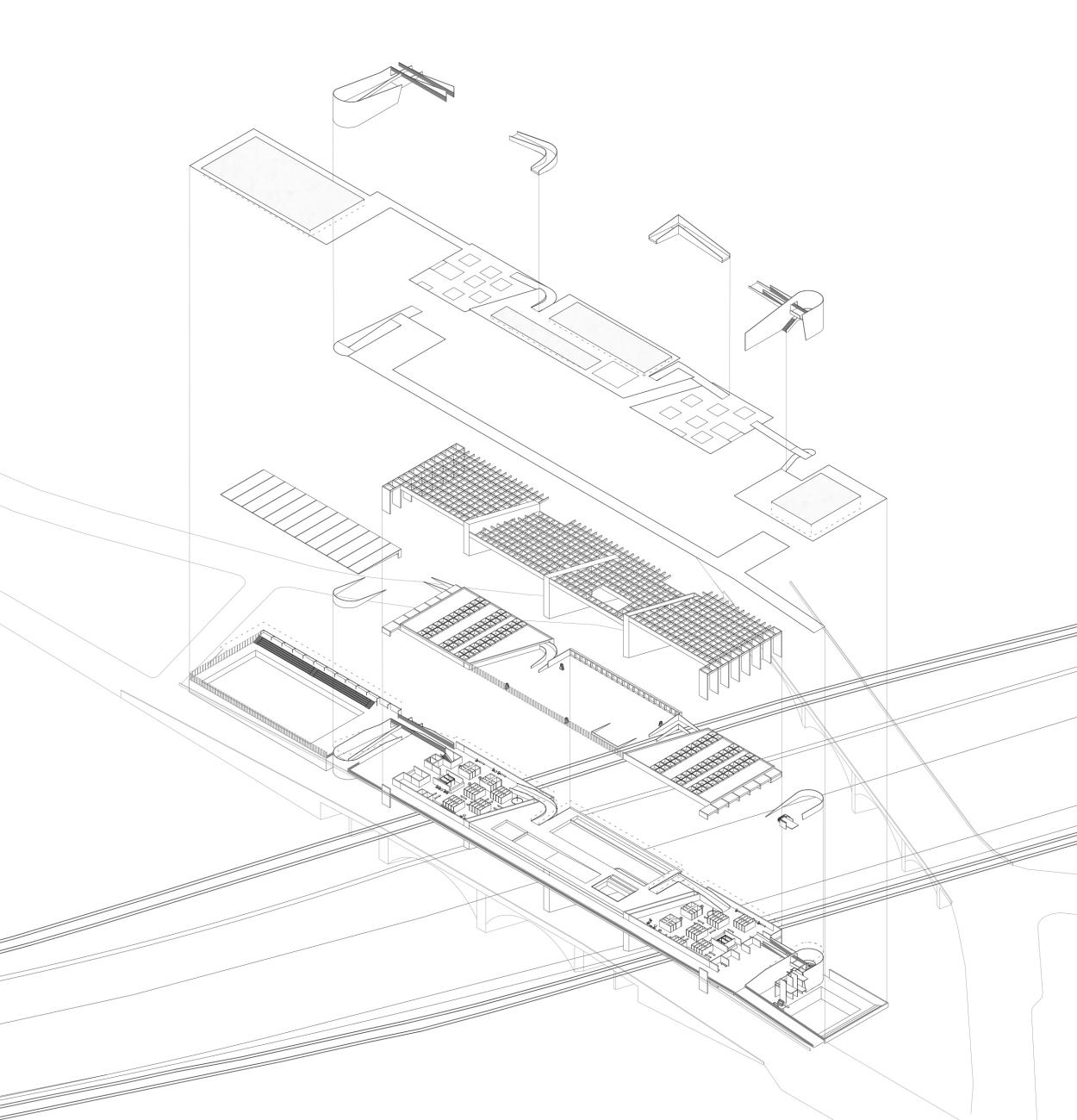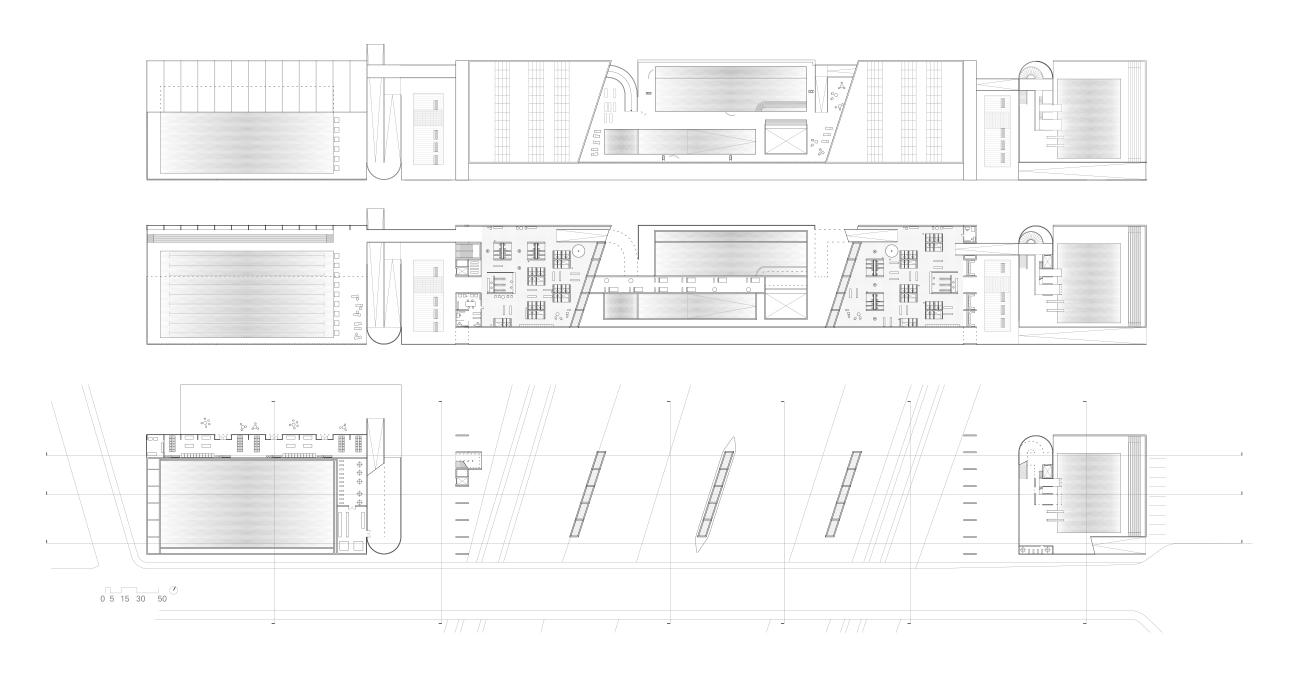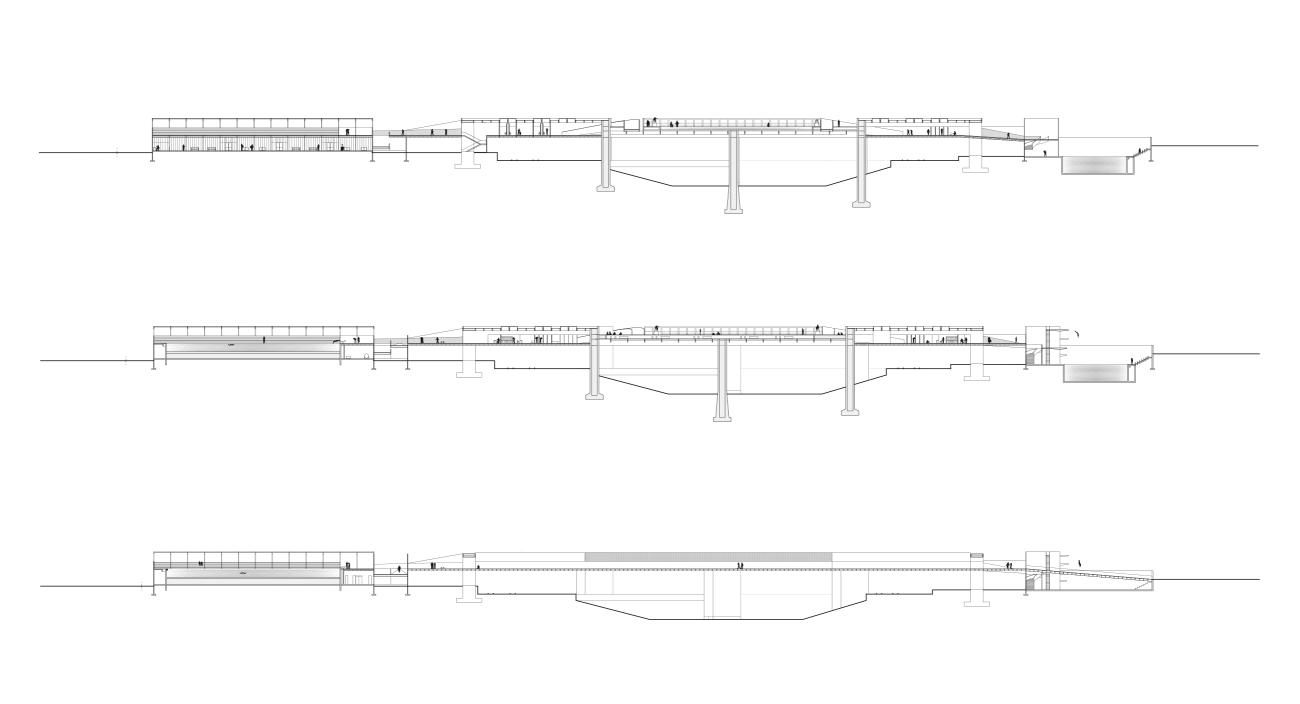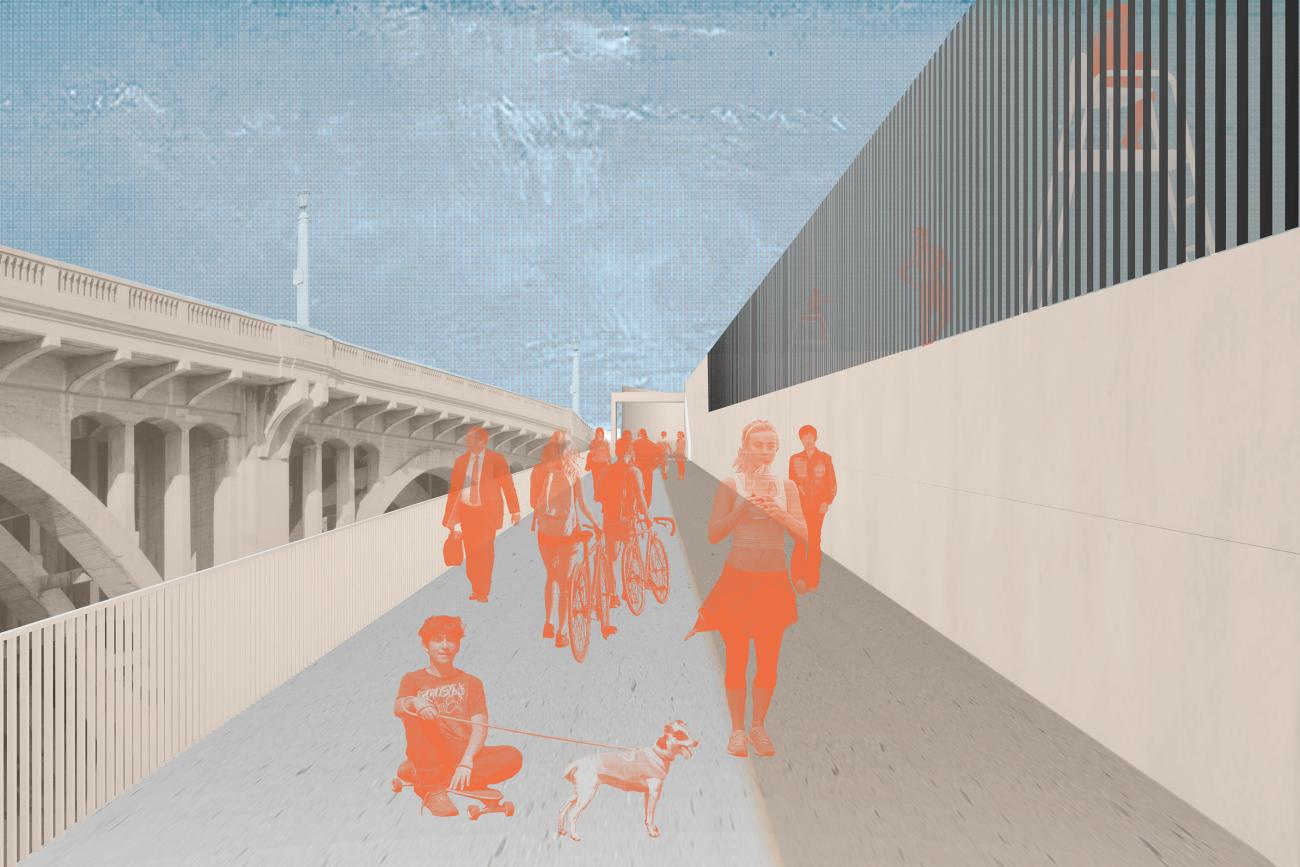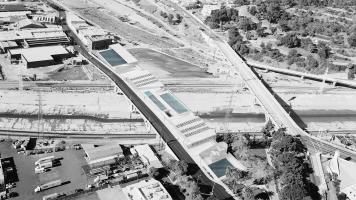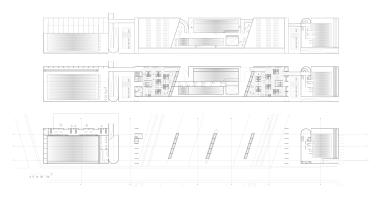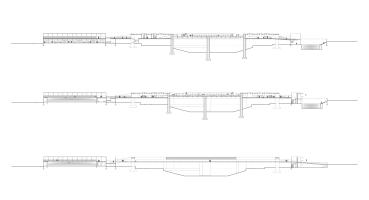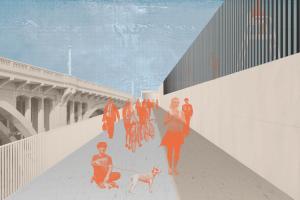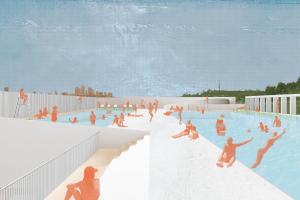Amelia Hazinski
2017
In Los Angeles: The Architecture of Four Ecologies, Reyner Banham called the city an instant paradise – just add water. Today, water scarcity seems to threaten the lifestyle that Banham celebrated. Far from an unsustainable luxury, public swimming pools can offer a dynamic public amenity for the city and provoke a new understanding of its water infrastructure.
The pool and laundromat is sited on a bridge connecting two new public parks on either side of the Los Angeles River. Instead of providing literal access to the riverbed at ground level, the bridge choreographs the movement of human bodies around bodies of water to generate new vantages on both the river and the city.
On the west end of the bridge, an Olympic-sized lap pool rests on the ground. On the east side, a diving pool is dug into the slope. In the center, shallow leisure and wading pools sit above the river. Instead of a singular procession down to the water, the circulation here doubles back on itself, bringing the swimmers emerging from the changing room in close proximity to the public walkway. As each segment of the bridge reformulates the relationship between river, water, and ground, the swimmer alternates between fixed, defined ramps and more loosely articulated open spaces.
The leisure and wading pools in the middle of the bridge are level with the Spring Street and North Broadway viaducts. Along the long axis of the central pool deck, there is a sense of being in a protected enclosure. Along the transverse, north-south axis, views open up to the city as the swimmer is immersed at street level. The bridge duplicates the existing bridges, while the pools themselves become a double of the dry, concrete riverbed below.


